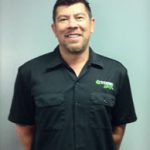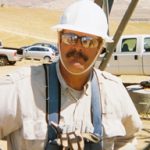Tell us about the company’s history and growth.
In 1953, fresh out of Yale and the University of Minnesota with undergraduate and graduate degree in mathematics, respectively, my father went to work for Helmut Schmid, a colleague of Werner Von Braun, the famous rocket scientist. He was working on the rocket range tracking missiles and bombs, which involved dropping a dummy from a plane with a strobe light attached and photographing its trajectory with several very large “ballistic” glass-plate cameras. After a few years he started a company focusing on industrial measurements, and when it went public he realized he didn’t enjoy the associated responsibilities. He was a researcher at heart, so he bought out the division that was devoted to industrial photogrammetry and launched Geodetic Systems, or GSI, in 1977.
A year later I graduated from Yale with a degree in engineering and applied science and joined the company, but it was kind of a sleepy enterprise at the time and I ended up going to work for a local engineering firm and just doing some part-time projects for dad on the side. Then personal computers were introduced in the early eighties, and I immediately saw their potential. I went to dad, who was still using glass-plate cameras and a mainframe to do his calculations, and I described how we could write new code for the PC and create a turnkey system to sell along with the photogrammetric film cameras he was developing. With the advent of digital photography and video cameras, and the continuing evolution of computer technology, we’ve kept refining our process over the years.
So GSI was an established company long before entering the wind industry.
Absolutely. One of the company’s first big jobs was to check the surface contour of a dish antenna at the National Radio Astronomy Observatory in Green Bank, West Virginia, which was the largest steerable radio telescope in the world at the time. Since then we’ve branched out into aerospace, automotive, shipbuilding, engineering, and nuclear, among other markets and industries. With the growth of the wind industry we realized that our technology would be perfect for the tower manufacturing facilities that are being built throughout North America. Checking the flatness of flanges with our digital camera based V-STARS measurement systems is a simple operation, and extremely fast, transforming a process that took an hour or more using other devices into one that takes a few minutes, or can even report measurements in real time using multiple cameras.
Can you give us an idea of how this process is performed?
What really sets photogrammetry apart from other technologies, such as laser trackers or laser radar, is that we don’t need a stable platform to do our measurements, so this system is ideal for the manufacturing environment.
You begin by attaching small retro-reflective markers to the surface you want to measure and then taking pictures from several different vantage points, allowing for the triangulation required to determine flatness. That information is uploaded into a laptop, and the results are available within a minute or so. Because of the markers and the camera’s built-in flash, the operator doesn’t have to worry about holding the camera steady, and there’s no need to focus or set the exposure. It’s really an easy operation, and it works especially well in tower manufacturing facilities where flanges are being welded to wind tower sections because they tend to be on rollers, which makes attaching the reflective markers a breeze.
The system is extremely portable, consisting primarily of a small, modified, industrialized digital camera and a notebook computer. It can even be used wirelessly so pictures can be transferred to the notebook for immediate processing. It can work indoors or outdoors, day or night, in the factory or in the field, and at practically any temperature.
We also have a customer who’s using the system to conduct static load testing of blades, so we’re just at the beginning stages of identifying all the applications we’ll be able to address for our customers in this market. This is really an exciting time for us, and for the wind industry as well.
To learn more: Call (321) 724-6831 or go to www.geodetic.com.








































